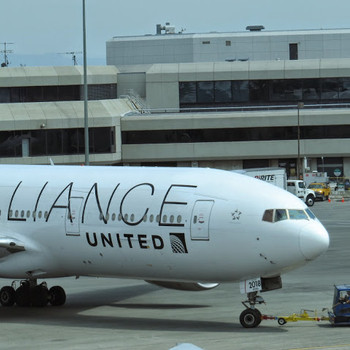Ap Physics C 1989 M2?
1 Answer
a) This is a basic application of newton's second law.
#2Mg - T_v = 2Ma#
#2Mg - 2Ma = T_v#
#2M(g - a) = T_v#
b) First of all, we know that what will make the pulley have a non zero angular acceleration is the tension.
We know torque to be
#T_vR - T_hR = I(a/r)#
#T_vR - T_hR = 3MR^2(a/R)#
#T_v - T_h = 3Ma#
#2gM - 2Ma - T_h = 3Ma#
#2gM - 5Ma = T_h#
#2gM-5Ma = T_h#
c) Now for some linear dynamics! We know that the force of friction is given by
Our expression for net force will therefore be
#T_h - F_f = 3Ma#
#2Mg - 5Ma - mu m_"total" g = 3Ma#
Here we will be taking the mass of the top block for the normal force , because we are considering the friction between the two blocks.
#2Mg -5Ma - mu 4Mg = 3Ma#
#2Mg - 4Mgmu = 8Ma#
#2Mg - 4Mgmu = 8Ma#
#g - 2gmu = 4a#
We know the value of
#g- 2gmu = 4a#
#g(1 - 2mu) = 8#
#1 - 2mu = 8/g#
#mu ~~ 0.1#
d) The only force acting on the top box is friction, therefore
#4Mg mu = M_c a_c#
#4Mg mu = 4Ma_c#
#g(0.1) = a_c#
#a_c ~~ 1# m/#s^2#
This concludes this problem. Hopefully this helps!

